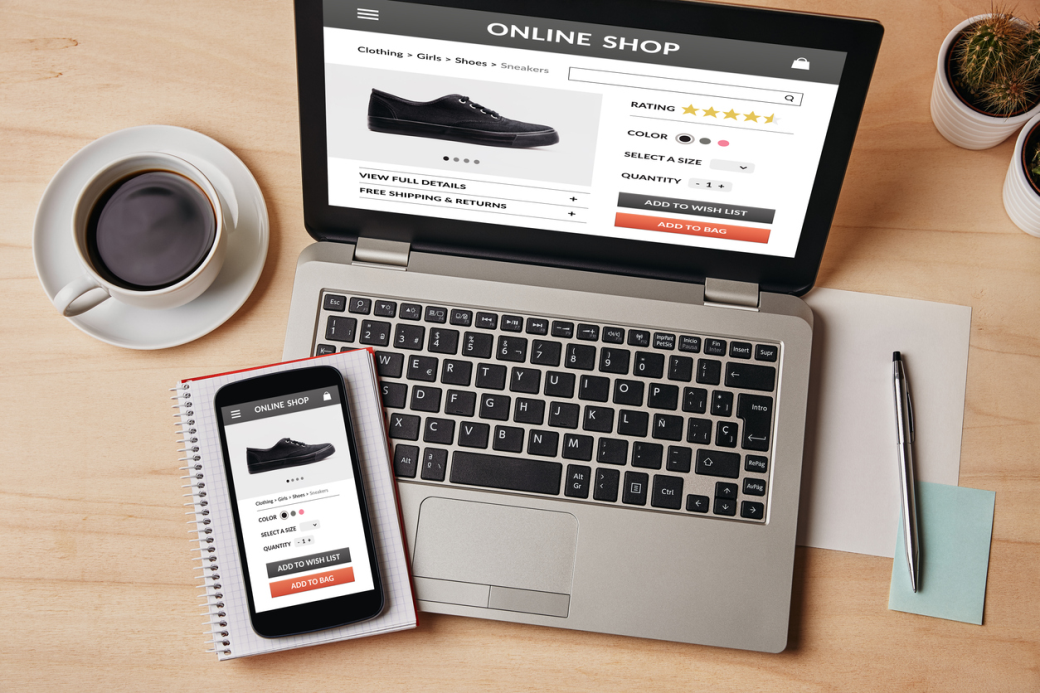In the fast-paced world of e-commerce, first impressions are crucial. A well-designed online store can significantly influence customer behavior, drive sales, and foster brand loyalty. Visual design encompasses everything from layout and color schemes to typography and imagery. Here’s a closer look at how visual design impacts e-commerce success and some key elements to consider for your online store.

Table of Contents
Toggle1. First Impressions Matter
Research shows that users form an opinion about a website within milliseconds. An attractive, well-organized website can instill trust and encourage users to explore further. Conversely, a poorly designed site can drive potential customers away. Here are a few ways to create a strong first impression:
- Professional Aesthetics: Invest in a clean, professional look that reflects your brand identity. This includes consistent use of colors, fonts, and imagery.
- Responsive Design: Ensure your site is visually appealing and functional across all devices, from desktops to smartphones. A mobile-optimized design is essential, as more consumers are shopping on their mobile devices.
2. Enhancing User Experience
Visual design plays a significant role in user experience (UX), guiding customers through their shopping journey. A well-designed site makes navigation intuitive and helps users find what they’re looking for quickly.
- Clear Navigation: Use clear categories and subcategories to organize products. A well-structured navigation bar helps users locate items effortlessly.
- Effective Use of Whitespace: Strategically using whitespace improves readability and reduces clutter. A clean layout allows customers to focus on the products rather than getting overwhelmed by too much information.
3. Emphasizing Product Presentation
High-quality visuals are critical in e-commerce, where customers cannot physically touch or try on products. Effective visual design can enhance product presentation and drive purchase decisions.
- High-Quality Images: Invest in professional product photography to showcase items from various angles. Customers are more likely to purchase when they can see detailed, high-resolution images.
- Interactive Features: Incorporate interactive elements like 360-degree views or augmented reality (AR) features to allow customers to visualize products better.
4. Building Brand Identity
Visual design is a powerful tool for establishing and reinforcing brand identity. Consistent design elements help create a recognizable brand image that resonates with your target audience.
- Color Psychology: Colors evoke emotions and can influence purchasing behavior. For example, blue often conveys trust, while red can stimulate urgency. Choose a color palette that aligns with your brand values and appeals to your target market.
- Typography: Select fonts that reflect your brand personality. Ensure that text is readable and complements your overall design aesthetic.
5. Creating Emotional Connections
Visual design can evoke emotions and tell a story, helping to forge a connection between the customer and the brand. Engaging visuals can enhance customer engagement and foster loyalty.
- Lifestyle Imagery: Use images that depict your products in real-life settings. This approach helps customers envision how they can integrate the products into their lives.
- Consistent Messaging: Align visual elements with your brand message and values. Consistency in visuals creates a cohesive narrative that resonates with customers.
6. Encouraging Conversions
Effective visual design can guide customers toward taking action, whether it’s making a purchase, signing up for a newsletter, or following your brand on social media.
- Call-to-Action (CTA) Buttons: Use contrasting colors and strategic placements for CTA buttons to make them stand out. Clear, compelling CTAs can drive users to complete their desired actions.
- Prominent Search Features: Ensure that the search bar is easily accessible and visually distinct. A well-designed search function can enhance the shopping experience and lead to higher conversion rates.
7. Testing and Iteration
Visual design is not a one-time effort; it requires ongoing testing and iteration. Regularly evaluate user behavior and preferences to optimize your design for better performance.
- A/B Testing: Test different design elements, such as colors, layouts, and images, to see what resonates best with your audience. Use data to inform your design decisions and make continuous improvements.
- User Feedback: Encourage customer feedback regarding your website’s design and functionality. Insights from users can highlight areas for improvement and enhance the overall experience.
Conclusion
Visual design is a vital component of e-commerce success, influencing everything from first impressions to customer loyalty. By focusing on aesthetics, user experience, product presentation, and brand identity, online retailers can create engaging shopping experiences that drive conversions. As you develop or refine your e-commerce site, remember that effective visual design is an ongoing process that requires continuous testing and adaptation to meet the evolving needs of your customers. Investing in strong visual design not only enhances the shopping experience but also contributes to the long-term success of your e-commerce business.


No responses yet